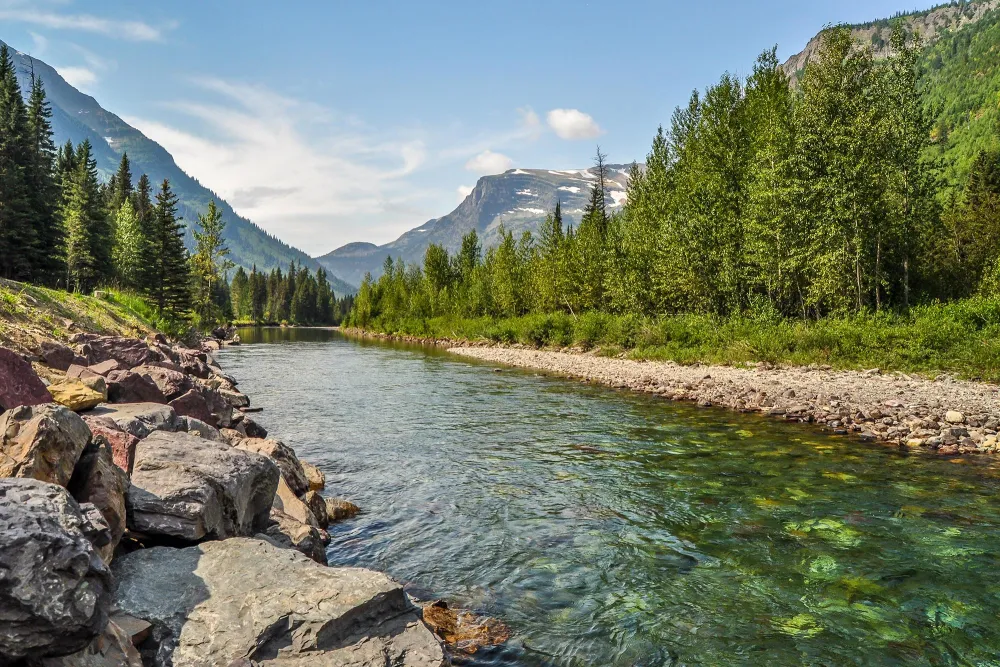The Arbor Day Foundation is pledging 10 million trees to areas impacted by hurricanes Helene, Milton Help us replant
Bulletin
How to Plant Conservation Buffers for Streams
Riparian areas include water-loving trees and other plants that grow near the banks of streams and lakes. Riparian vegetation is not only luxurious and beautiful, but it plays many important roles in the ecosystem. A riparian conservation buffer may be natural or planted, but it can offer a landowner generous benefits in return for minimal expense and care.

A healthy conservation buffer is evidence of wise land management.
The Benefits of Conservation Buffers
Reduce Floods & Erosion
Riparian buffers slow water flow, reducing the likelihood of downstream flooding. They also filter and spread water and help hold stream bank soil during flooding. Grasses, trees, and shrubs in the strip catch and hold sediments and attached pollutants from adjacent fields before they can wash into the stream.
Trap Nutrients
Recent studies show that riparian forests trap and retain significant amounts of nutrients in runoff from agricultural fields. More than 80% of nitrogen and phosphorus can be kept from entering the stream.
Home for Wildlife
Riparian areas are home to a variety of birds and animals who find food, cover, and relief from temperature extremes. Fish need healthy riparian areas for sustained water supply, cool water, aquatic vegetation, and stream-bank shelters.
Store Water
The soils of riparian areas absorb excess water runoff. The absorbed water enters the groundwater and is released at a later time and slower rate to maintain stream flow.
A Place for People, Too
Riparian areas produce an abundance of cool shade, natural beauty, wildlife viewing, and ample water for fishing or water activities. For a private landowner, a riparian forest can be a special sanctuary for the family and visitors.
Elements of a Conservation Buffer
A conservation buffer can consist of successive rows of trees, shrubs, and grass. These may be established in three ways:
- Native woodlands can be retained or restored to function as a filter strip.
- Native woodlands can be supplemented by planting additional rows of trees, shrubs, and grasses.
- New trees, shrubs, and grasses can be planted where none presently exist.
Earning Dollars from Conservation Buffers
Conservation buffers are getting increased attention for production of alternative crops, providing landowners with additional opportunities for revenue, including:
- Timber production from plantings of high-value hardwoods such as walnut and oak.
- Horticultural products, including seeds and cuttings grown for nurseries or the floral industry.
- Cost share or annual payment incentives through federal, state, or local conservation programs.
In using a riparian area for production, remember to protect the area from harmful impacts of livestock, heavy equipment, or other activities that would impair the functioning of the riparian area.

